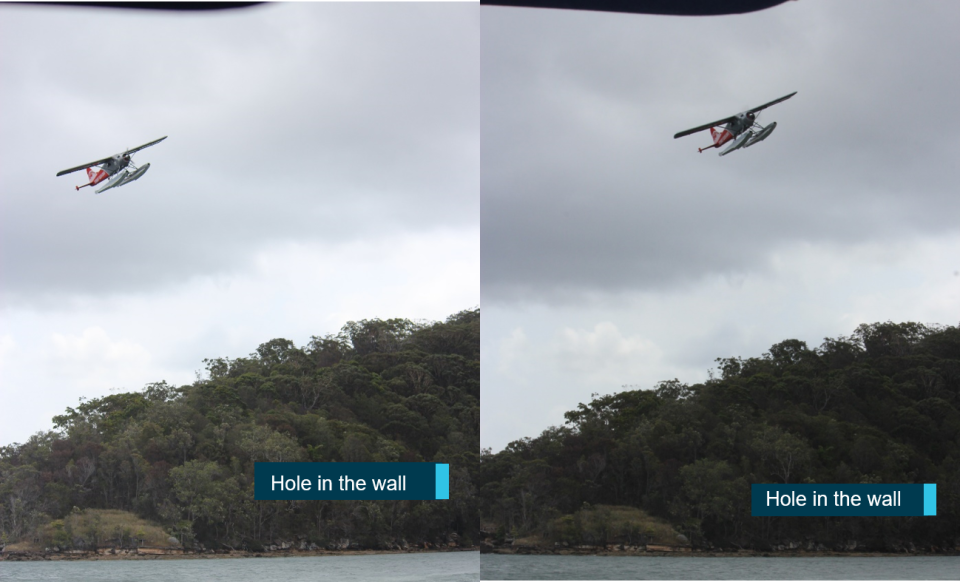Revealed: Eerie last photos taken by passenger before seaplane's fatal crash
Photographs taken by a passenger in the moments before a seaplane nosedived into a river north of Sydney killing six people, including the pilot, have been released by crash investigators.
The six images were included in the Australian Transport Safety Bureau’s interim report into the crash on New Year’s Eve, 2017.
British businessman Richard Cousins, four members of his family and Canadian pilot Gareth Morgan died after the plane made a 270-degree turn, entered a narrow bay and then suddenly nosedived into the water.
The lightweight plane bound for Sydney’s Rose Bay wasn’t required to carry a cockpit voice or flight data recorder, leaving investigators to determine the plane’s fatal flight path from the passenger’s photographs and witness accounts.

ATSB officials have previously likened the plane’s unusual course to someone turning into a dead-end street instead of onto the freeway.
“It is important to note that the ATSB’s investigation into this tragic accident is ongoing, so we are constrained on the information we can release publicly at this time,” ATSB executive director Nat Nagy said in a statement.
“However, the interim report does provide a factual update on the investigation so far.”
The pictures were taken over less than a minute as the Sydney Seaplanes’ DHC-2 Beaver flew northeast above Cowan Creek towards the Hawkesbury River.

The last photo was snapped about the time the plane began leaving its intended flight path from Cottage Point and headed west into Jerusalem Bay where it crashed.
The report is now looking into factors surrounding the pilot’s health and medical history, as well as whether flight recording systems should be fitted to lightweight planes operating passenger services.
The results from an aviation medical specialist’s review of the pilot’s medical records and autopsy are expected in early 2019.

The pilot had conducted some 780 flights to or from Cottage Point.
Sydney Seaplanes chief executive Aaron Shaw on Thursday said the company was pleased the investigation had found the aircraft was in excellent condition and the pilot was highly qualified.
Mr Shaw also noted regulators highly praised its operation during a safety audit three months prior to the crash.

